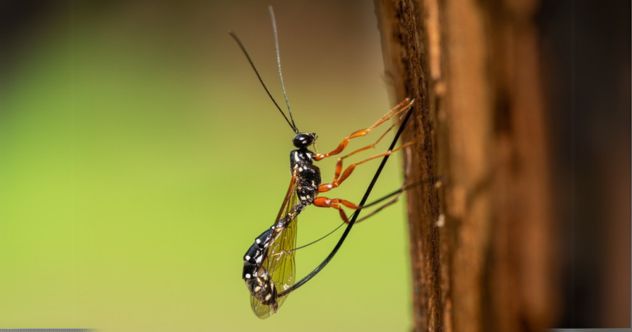Now Reading: 10 Fascinating New Insect Discoveries by Scientists
-
01
10 Fascinating New Insect Discoveries by Scientists
10 Fascinating New Insect Discoveries by Scientists

Speedy Summary
- Bone Collector Caterpillar (Hawai’i): Decorates itself with dead insects for camouflage; only 62 recorded by researchers.
- ancient Hell Ant (Brazil): Fossil of a 113-million-year-old predator discovered; believed extinct due to limited prey-hunting style.
- Crypt Keeper Wasp: Parasitic wasp manipulates gall wasps into self-destructive behavior before consuming them from the inside.
- Fuzzy Longhorn Beetle (Australia): Newly discovered beetle with unique “punk” hair-like features confirmed by CSIRO scientists as a species never seen before.
- Exploding Ants (Southeast Asia): Defend their colonies by self-destructing adn releasing toxic fluid; species found in Borneo canopies.
- Pelican Spider (Queensland, Australia): Uses spear-like legs to hunt othre spiders, recently uncovered in Conway National Park during surveys.
- Darth Vader Sea Bug: Giant isopod resembling Darth Vader lives deep underwater near South China Sea’s spratly Islands; also consumed as seafood delicacy in Vietnam markets.
- Peruvian Parasite Wasp: Preys on caterpillars and beetles, depositing eggs that eat host bodies from the inside out-a discovery made among over 100 new Amazon rainforest species.
- Movile Cave Centipede (Romania): Top predator in toxin-filled subterranean cave ecosystem adapted for darkness and harsher chemical environments.
- Lord Voldemort Ant (Australia): Ghostly subterranean predator named after harry Potter villain discovered using advanced scraping techniques underground.
Indian Opinion Analysis
While India’s immediate involvement with these discoveries is minimal, such bio-exploration underscores global scientific efforts that could hold ecological lessons for Indian researchers tackling biodiversity in regions like the Western Ghats or the Indo-Gangetic plains-areas rich with endemic life yet threatened by human interference.
The diversity uncovered emphasizes how unique adaptations are shaped under extreme conditions-whether underground caves or dense forests-mirroring India’s geographically diverse ecosystems wich host similarly mesmerizing creatures often unnoticed or undocumented.
For India, where bioprospecting and conservation demand growing attention amidst climate change pressures, these examples of resilient creatures signal an urgent reminder of scientific curiosity blended with environmental stewardship. Particularly pertinent would be understanding niche predators’ roles similar to those observed here across various ecosystems worldwide-including rivers, mangroves, deserts-to help strengthen India’s own ecological preservation frameworks.
Read More here



























